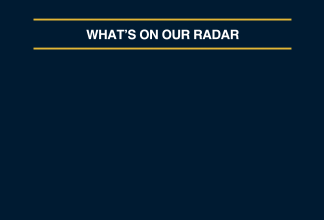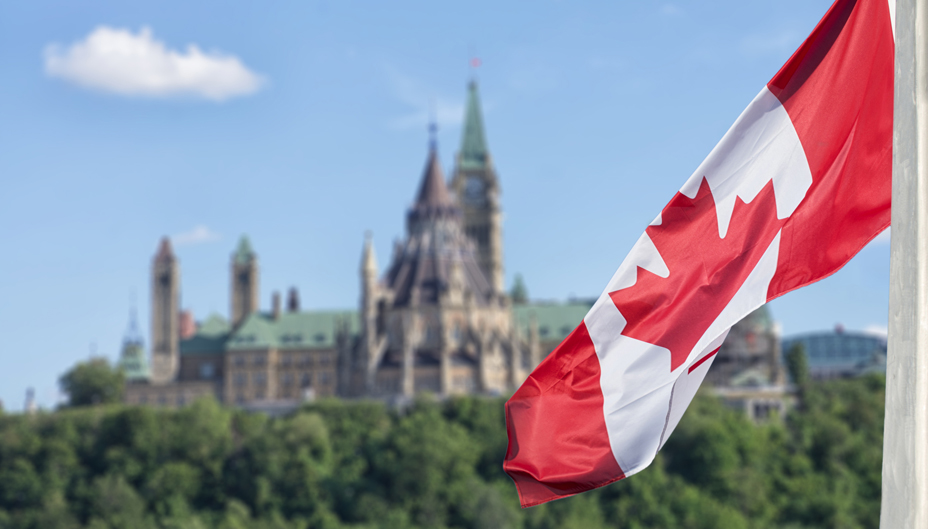Canadian Election Preview: Platforms, Ideas & Implications
Written by The Inspired Investor Team
Published on September 16, 2021
minute read
Share:
With the Canadian election just around the corner on Monday, Sept. 20, there's still time to dig into the issues, learn more about the platforms and arm yourself with as much information as possible to make an informed decision. (As an investor, doesn't that process sound familiar?)
Here we offer up an election preview from RBC Global Asset Management's chief economist, Eric Lascelles.
The following is an excerpt from Lascelles' latest MacroMemo, a weekly overview of issues impacting the global economy.
The Canadian election is now less than a week away. Polls reveal a race that initially favoured the Liberals, but that is now essentially tied from a popular-vote perspective between the Liberals and Conservatives.
However, the Liberals enjoy a superior distribution of votes, such that most prediction models continue to anticipate a Liberal minority government:
The CBC model predicts 155 Liberal seats versus 118 Conservative ones.
338Canada predicts 145 Liberal seats versus 129 Conservative ones.
A range of betting websites assign odds in the realm of a 75% chance that the Liberals will win the most seats.
Conversely, the Polly model gives a slight edge to the Conservatives, at 137 seats to 134.
Broad ideas
The two vying parties' platforms are both expansive, as is often the case during an election campaign. But it seems especially true this time: the number of major proposals is mindboggling.
We posit that this is for a few reasons. First, the pandemic hasn't yet been resolved, potentially justifying further significant policy measures. Second, the big government response to the pandemic has increasingly normalized large policy actions, regardless of the need. Third, interest rates have been so low for so long that no one feels particularly constrained by fiscal finances (though the Conservatives commit to balancing the budget in a distant 10 years). Suffice it to say that no party is campaigning on a “small government" platform.
Simultaneously, it appears that everyone has shifted a step or two to the left along the political spectrum. The Liberals are promising a significant number of new programs that would further expand the government. Not to be outdone, the Conservatives have arguably made the bigger leap leftward (if only to the middle of the political spectrum), now occupying territory only recently vacated by the Liberals. They also envision major new programs.
The Conservatives appear to be taking a page from the U.K. conservative political playbook, seeking the support of the labour movement and working class voters, and deprioritizing big business and fiscal prudence.
From a top-down fiscal perspective, the Liberals plan to spend more money – $78 billion of new spending is proposed over the next five years versus $51 billion by the Conservatives, but this difference is arguably overstated as the expected deficit for each party in five years is quite similar: $32 billion for the Liberals and $25 billion for the Conservatives. At the margin, the Liberals plan to be a bit more fiscally expansive, and ring up additional public debt in so doing.
Policy platforms
It is impractical to compare and contrast every one of the hundreds of policy proposals made by each party. Instead, we provide a high level summary of the most economically relevant items.
In the tax space, the Liberals propose to impose a sizeable tax on the country's largest insurers and banks, generating an additional $5.3 billion in government revenue over four years. There is also concern that the Liberals might increase the capital gains inclusion rate or further tax high-income earners, though this has not been mentioned in the platform. Conversely, the Conservatives promise a one-time GST tax holiday in December of this year to encourage additional purchases in retail stores.
With regard to immigration, the two parties remain strongly pro-immigration, though with modestly different visions of how to implement certain facets. On trade, the Conservatives propose trade deals and open working arrangements with Australia, New Zealand and the U.K. For their part, the Liberals have been demonstrably in favour of free trade during their tenure and have struck free trade deals. The differences here are minor.
On the subject of workers, much is proposed. The Conservatives plan to make the self-employed eligible for employment insurance and further propose a “Super EI" that would increase the generosity of benefits during a recession. They also plan to pay up to 50% of the salary for new hires for six months after the Canada Emergency Subsidy ends. The Conservatives also plan to double the generosity of the Canada Workers Benefit, worth an additional $1,400 for those earning less than $24,573 per year. The Conservatives further propose partially forgivable loans to small businesses in retail, tourism and hospitality. They also plan for a month of heavily subsidized restaurant dining to get the restaurant sector moving again.
In addition to maintaining their existing suite of pandemic worker supports, the Liberals plan to provide wage and rent support for the tourism sector and subsidize cultural events with reduced capacity. The Liberals would also expand eligibility for the Canada Workers Benefit rather than increase its generosity, adding a further million people to its rolls. The Liberals would also increase the guaranteed income supplement for low-income seniors by an average of $42/month, and increase the repayment assistance threshold for those with federal student loans.
With regard to businesses, the Conservatives have fairly major ideas that depart significantly from past Tory platforms. Large federally regulated companies – including banks, insurers, telecom and airlines – would have to include worker representation on their boards of directors. The party would also update the Canada Labour Code to make it easier for workers to unionize in certain situations.
More in keeping with the party's pro-market past, the Conservatives would allow international telecommunication companies into Canada, potentially presenting a stiff challenge to the incumbents. The party also pitches a 5% credit on capital investment over the next two years and a 25% tax credit on personal investments into small businesses.
Both parties are pro-vaccine, with plans to get the inoculation rate higher. In general, the Conservatives appear to be more tolerant of unvaccinated individuals as long as they are tested regularly.
On the housing file, both parties propose to further limit foreign home ownership, both propose to build many more homes, and the Liberals also propose an anti-flipping tax on homes owned for less than a year, cheaper mortgage insurance and a new tax-sheltered program for saving a down payment.
The differences in health care ultimately appear to be fairly small; for childcare the Liberal proposal is much more expansive; and the two parties' green policies have converged significantly over the past two years, though the Liberal plan appears the more practical.
Implications
It is hard to speak with much confidence when the outcome is still in substantial doubt. Given the constraints of a likely minority government and the poetry of campaigning versus the prose of governing, many of the proposals won't actually be implemented.
Nevertheless, if the Liberals are re-elected, they would possess considerable scope for action given that they can expect support for progressive initiatives from the NDP or a number of other parties. Of course, this would also represent an effective continuation of the existing government, and so hardly constituting an upheaval.
On the other hand, a Conservative minority would be somewhat more constrained. The party has fewer natural allies in parliament. But do not underestimate the ability for a minority government to survive and implement policies much as the Harper Conservatives managed, and many of the Conservatives' proposals in this particular campaign should be palatable to the other parties.
Ultimately, the fiscal trajectories are fairly similar for the two parties. While the details differ and we are glossing over a handful of initiatives that could incrementally alter the rate of productivity growth, the overall pace of GDP growth should be fairly similar regardless of which party is elected.
Two further observations are perhaps useful. First, elections are not forever – they only grant the ability to govern for a maximum of four years. Should Canada go off course, there are ample opportunities to course correct.
Second, financial markets may be less partisan than commonly imagined. Yes, there is a general preference for a right-leaning government. But this particular right-leaning government proposes a number of things that may be worrisome to business leaders, and the U.S. experience over the past five years demonstrates that markets are equally capable of flourishing under right-leaning and left-leaning governments.
For more economic insights, look for the weekly MacroMemo at rbcgam.com/macromemo.
RBC Direct Investing Inc., RBC Global Asset Management Inc. and Royal Bank of Canada are separate corporate entities which are affiliated. RBC Direct Investing Inc. is a wholly owned subsidiary of Royal Bank of Canada and is a Member of the Investment Industry Regulatory Organization of Canada and the Canadian Investor Protection Fund. Royal Bank of Canada and certain of its issuers are related to RBC Direct Investing Inc. RBC Direct Investing Inc. does not provide investment advice or recommendations regarding the purchase or sale of any securities. Investors are responsible for their own investment decisions. RBC Direct Investing is a business name used by RBC Direct Investing Inc. ® / ™ Trademark(s) of Royal Bank of Canada. RBC and Royal Bank are registered trademarks of Royal Bank of Canada. Used under licence. © Royal Bank of Canada 2021.
The views and opinions expressed in this publication are for your general interest and do not necessarily reflect the views and opinions of RBC Direct Investing. Furthermore, the products, services and securities referred to in this publication are only available in Canada and other jurisdictions where they may be legally offered for sale. If you are not currently resident of Canada, you should not access the information available on the RBC Direct Investing website.
Explore More

Here’s What Every Canadian Should Know About Estate Planning
Insights from Leanne Kaufman to help you feel more confident as you plan
minute read

3 Things We're Watching This Week
What the Inspired Investor team is watching
minute read

What’s Driving the Recent Surge in Gold Prices
Here are some things to watch with the gold market
minute read
Inspired Investor brings you personal stories, timely information and expert insights to empower your investment decisions. Visit About Us to find out more.







